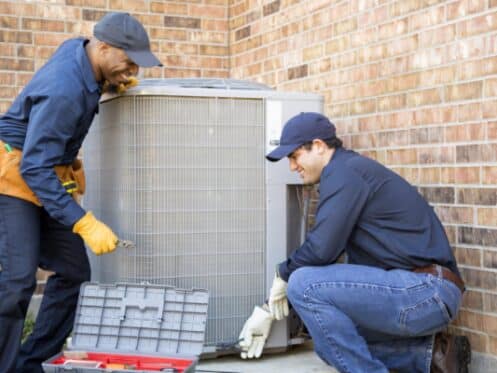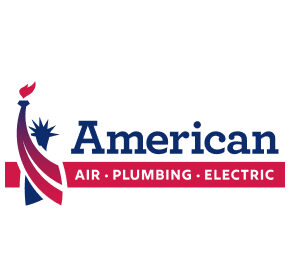Efficiency is one of the most important factors to consider when choosing an air conditioner for your Oviedo, Florida home. By making efficiency a top priority, you can cut your cooling costs, reduce your carbon footprint, and qualify for a number of high-value tax credits. Although there are many ways to both measure and verify the efficiency of AC systems, SEER ratings are considered the most effective. Read on to learn all about what SEER ratings are and how they’ll impact your next air conditioner purchase.
What Is a SEER Rating?
Implemented in 1992 by the Energy Policy Act, SEER ratings are used to set and enforce the minimum efficiency standards for air conditioning systems throughout the nation. Short for seasonal energy efficiency ratio, SEER is a measurement of an air conditioner’s output over the course of an entire cooling season, divided by the amount of energy that it uses throughout this same time. Higher SEER ratings denote higher levels of efficiency.
In 1992 when SEER ratings were first introduced, a SEER rating of just 10 was sufficient for meeting minimum standards. Now, however, minimum SEER ratings are significantly higher. Moreover, they’re also determined by region or zone, such that homeowners in hot, humid climates are required to have higher-performing AC models than are homeowners in areas where AC use is often limited during the summer months.
What Is a SEER2 Rating
Although there’s never a bad time to learn all about SEER ratings and their impact on air conditioning equipment, the SEER testing method of 1992 is on its way out. From the time of their inception, SEER ratings were determined by a standardized test that did not account for factors present in real-world applications. Foremost among these overlooked factors were the considerable changes in air pressure and stress that occur when air conditioners are connected to central HVAC ductwork.
Designed to function as part of ducted HVAC systems, air conditioners were being measured in accordance to how well they worked as standalone units with no attached air distribution systems. In an effort to obtain more accurate information on AC efficiency, SEER2 testing was developed in 2016, and implemented in 2023. As such, all brand-new air conditioners undergo SEER2 testing, and they must adhere to SEER2 minimums.
Given that the transition from the SEER rating system to SEER2 testing is still very new, consumers may find air conditioners that have undergone both forms of testing. Many recent AC models are labeled with SEER and SEER2 ratings, however, no new air conditioners are brought to market without SEER2 labeling. With SEER2 ratings reflecting the most accurate and up-to-date findings and requirements, they’re currently a hallmark of compliance.
How SEER Ratings Will Affect the Price of Your Next Air Conditioner
With higher SEER and SEER2 ratings denoting higher levels of efficiency, a high-rated air conditioner typically costs significantly more than one that meets the minimum. However, the greater upfront price of a well-rated AC often proves to be the most cost-effective choice over time. Efficient air conditioners cost a lot less to use, and they’re also less likely to wear down before the ends of their lifespans due to decreased stress. Thus, the savings that you enjoy on your energy bill today by upgrading to a more efficient air conditioner could be even greater in the future.
What Does SEER Testing Entail?
Developed by the United States Department of Energy (DOE) and the American Society of Heating, Refrigeration & Air Conditioning Engineers (ASHRAE) in 1979, SEER testing is performed in a laboratory setting that simulates the conditions of the common cooling environment. AC models are tested at 80 degrees Fahrenheit and with a relative humidity of 50%. These same units are then tested again at just two degrees higher and with a relative humidity of 39%. For SEER2 testing, similar temperature and humidity conditions are applied, however, SEER2 simulations additionally account for normal changes in air pressure when AC models are used with standard ducting.
SEER Ratings and Efficiency-Related Tax Credits
Federal tax incentives are helping consumers to offset the costs of replacing old, outdated HVAC equipment with more efficient and environmentally friendly designs. Federal tax credits aren’t rebates or other monies that you can claim and spend right away. Instead, these are deductions that can be used to offset your end-of-year tax debt. With enough qualifying tax credit, many homeowners who invest in efficiency-related HVAC improvement in 2023 may even qualify for tax returns.
These credits are provided with the understanding that the HVAC improvements consumers are making will collectively benefit the climate and slow global warming. As such, each available credit comes with minimum efficiency requirements. Moreover, for HVAC systems, these requirements are always listed in relation to SEER and SEER2 ratings. For instance, homeowners installing new air conditioners in 2023 can claim tax credits as high as 30% of their total project costs or up to $600. However, they can only do so when installing AC models with SEER2 ratings of 16 or higher.
What’s the Minimum SEER Rating for New AC Equipment in Florida
SEER and SEER2 requirements are different throughout the North Region, Southeast Region, and Southwest Region. Florida is considered part of the Southeast Region. As such, residential air conditioners at or below 45,000 British Thermal Units (BTUS) must have SEER2 ratings of at least 14.3 or SEER ratings of at least 15. For residential AC units with 65,000 BTUs of cooling power, the minimum requirements for efficiency are SEER ratings of 14.5 or SEER2 ratings of 13.8.
Looking Beyond SEER and SEER2 Ratings
Efficiency is an increasingly important factor for most consumers. However, SEER and SEER2 ratings aren’t the only things to consider when buying a new AC. British Thermal Units or BTUs will tell you whether or not an air conditioner is powerful enough for your home. An air conditioner’s EER or energy efficiency ratio matters as well. This is the amount of cooling power that an air conditioner is able to provide using a measured amount of energy.
It’s additionally important to note that even the most efficient air conditioner won’t perform well if it isn’t properly sized. Although an air conditioner’s BTUs can give you an idea of whether or not it is powerful enough for your home, it’s vital to account for things like the height of your ceilings, how much insulation your home has, and whether or not your AC will be servicing every room. Thus, having a licensed HVAC company determine the best size for your new air conditioner is best. After assessing your home and performing the necessary calculations, we can assist you with find inga model that has the right EER, SEER, and SEER2 ratings for helping you meet your home efficiency and money-saving goals.
We’ve been proudly serving residents of Oviedo, Florida since 1986. We offer heating, cooling, and indoor air quality services. We also provide ductless mini-splits. If you need help finding the right air conditioner for your home, we’re here to provide it. To get started, contact American Air, Plumbing, and Electrical today.


